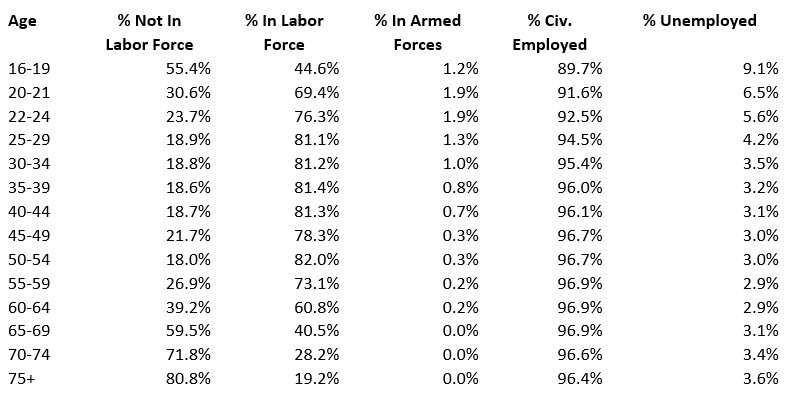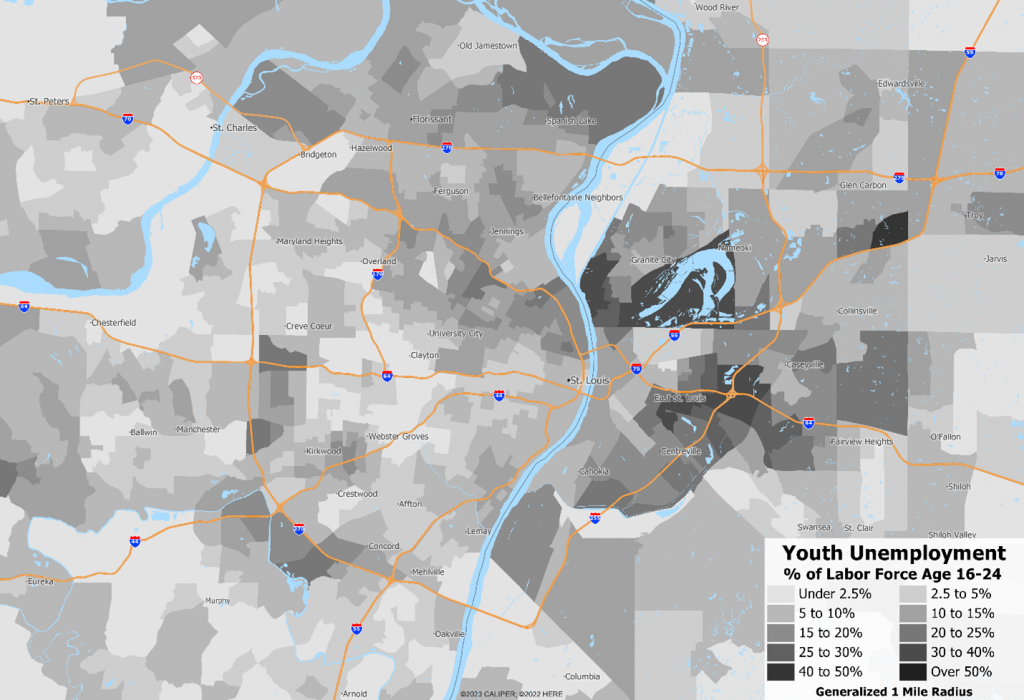The American Community Survey reports detailed labor force status by sex and age, and we recently added these tables to our annual demographic update set. While unemployment at any age is important, it is particularly problematic for young workers who struggle to start careers that will sustain them through life.
Overall unemployment rates are much improved since the darkest days of the pandemic just three years ago, but these lower overall averages mask some significant details that merit attention. Nationally, the distribution of employment by age group is shown in the table below:

The majority of late teenagers are, as expected, not in the labor force as they are enrolled in high schools, colleges, and universities. Those in the labor force have left school either at the earliest possible opportunity or at high school graduation. Most find themselves at a disadvantage in the labor force – suffering from the double hurdles of both a lack of education and a lack of experience. This shows in the high unemployment rate of over 9.1%, compared to the national rate of 3.75%.
What distinguishes the unemployed from those classified as being not in the labor force is that unemployment is characterized by the active seeking of employment. While the amount of effort expended is not measurable, the reality is that there are approximately 1.75 million unemployed young workers under the age of 25. This age cohort, representing under 14% of the total labor force, accounts for over 25% of the unemployed.
But because we are primarily interested in spatial patterns, we can’t help but point out that the distribution of youth unemployment is more prevalent in lower income areas, both urban and rural. We also want to note that some very affluent neighborhoods nationwide also have high unemployment in these age groups. The maps below show unemployment rates within New York and Saint Louis. In both cases, we find a definite spatial association between high youth unemployment and low income.


